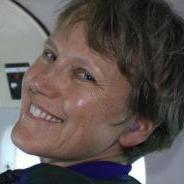Leaderboard
-
in all areas
- All areas
- Adverts
- Advert Questions
- Advert Reviews
- Videos
- Video Comments
- Blog Entries
- Blog Comments
- Images
- Image Comments
- Image Reviews
- Albums
- Album Comments
- Album Reviews
- Files
- File Comments
- File Reviews
- Dropzones
- Dropzone Comments
- Dropzone Reviews
- Gear
- Gear Comments
- Gear Reviews
- Articles
- Article Comments
- Article Reviews
- Fatalities
- Fatality Comments
- Fatality Reviews
- Stolen items
- Stolen item Comments
- Stolen item Reviews
- Records
- Record Comments
- Record Reviews
- Help Files
- Help File Comments
- Help File Reviews
- Events
- Event Comments
- Event Reviews
- Posts
- Status Updates
- Status Replies
-
Custom Date
-
All time
January 20 2016 - August 23 2025
-
Year
August 23 2024 - August 23 2025
-
Month
July 23 2025 - August 23 2025
-
Week
August 16 2025 - August 23 2025
-
Today
August 23 2025
-
Custom Date
08/06/2022 - 08/06/2022
-
All time
Popular Content
Showing content with the highest reputation on 08/06/2022 in all areas
-
3 pointsKentucky. Help me out here, seems like there are other asshole politicians from Kentucky.
-
2 pointsSo what is a sociopath with no marketable skills expected to do now? Run for president?
-
1 pointIntro As there are not a lot of ressources regarding a transition from skydiving to paragliding/speedflying available online, I decided to share my experiences and impressions in this post here. Even if you are not planning to get into paragliding yourself, it might still give some interesting insights. If you like, I can keep you updated on my journey. About my skydiving background Originally from Austria, I started skydiving in southern Germany back in August 2012 and got pretty hooked on it. After spending every weekend at the dropzone for about a year, I decided to quit my regular job, move to the dropzone and pursue a career there, although I always had to support it with at least a part time "normal" job. Living off skydiving alone is almost impossible within Germany. After about two years (as soon as legally possible) I got my coach and tandem instructor rating. I was able to earn money with skydiving from that point on, mainly doing videos, tandems and coaching jumps. My AFF rating followed soon after. My favourite discipline in skydiving has always been canopy piloting, why I invested lots of time, money and effort into that. I quit skydiving in the beginning of 2020 as I was starting to burn out after 7 seasons of 7-day-weeks during the summer and moved back to my origin in the Alps of Austria at the beginning of this year. Alltogether I did about 3500 jumps of which about 2000 have been on solo-canopies. My canopy progression was: * PD 170 (~150 jumps) * Pilot 150 (~150 jumps) - started working on high-performance landings with that canopy * Pilot 132 (~200 jumps) * Katana 120 (~200 jumps) * Velocity 96 (~300 jumps) * Valkyrie 84 (~1.000 jumps) - loaded with up to 35lbs of extra lead (total exit weight around 220lbs) (sample landing) Do not take my personal path as advice for your own downsizing. I went through some downsizing steps rather fast, but keep in mind that I did many of these jumps in shorter timespans than many other people and always had direct mentoring from more experienced pilots available. In retrospective I have to say, that the step from the Pilot 132 to the Katana 120 was the most challenging. My paragliding experience until now I started my training at Cloudbase, a professional, commercial paragliding school in Zell am Ziller (Tyrol, Austria) - huge recommendation by the way - last Saturday and completed my final exam yesterday. Usually training takes a bit longer (40 flights) but due to local regulations a shortcut for licensed skydivers is possible (15 flights, although practically not appropriate in many cases). Theoretical instruction is easy, but covers topics that many skydivers have likely never had any contact with. It might have helped that I also hold a commercial pilot license for airplanes and have quite some knowledge regarding meteorology and basic aerodynamics, but I doubt that my skydiving experience gave me an advantage in that area. During training (and some test flights today) I had the chance to fly the following paragliding wings (surface area in brackets although less relevant): * Mescal S (240 sqft) * Masala S (235 sqft) * Susi 23 (213 sqft) * Susi 21(190 sqft) * Kode P 18 (173 sqft) * Tonic 2 S (172 sqft) How do paragliding wings compare to skydiving canopies? I was surprised how much performance even large student paragliding wings offered in comparison to skydiving canopies for students. While a skydiving canopy for students (and to be honest - also most intermediate skydiving canopies) allows the pilot to hang in the harness like a bag of water and yank on the steering lines without any requirement for sensitivity, a paragliding wing requires immensely more coordinated inputs by harness and brakes to achieve an acceptable amount of control. I suppose a docile student paragliding wing would likely still not kill you, but it will be a very uncontrolled ride, if you fly it the same way a skydiving canopy allows you to fly. Techniques required to fly real high-performance skydiving canopies transition very well to paragliding. From the first flight on paragliding felt very natural and I had the feeling of having a good amount of control over the wing. I got lots of compliments to be the very first skydiver at the school with sensitivity for brake inputs. Aside from techniques like doing big ears, that are not used/available in skydiving, a huge difference is the possibility of (unintentionally) inducing extended rolling and pitching oscillations and the inputs required to stop these oscillations. Standard skydiving canopies do not really require such inputs and will quickly self stabilize (or at least keep the oscillations low). High-performance skydiving canopies require such inputs but still stabilize quicker than paragliding wings. While angle-of-attack control is not necessarily required to safely fly a skydiving canopy, like it is on a paragliding wing, it certainly allows much better flight path control even on less performant skydiving wings (Did you ever feel your controls become "mushy" after recovering from a turn input? Surprise! There's ways around that...). Some skydiving pilots might bring that skill, some might not. Paragliding wings are a lot easier to flare than their skydiving counterparts. I did not see a lot of really bad flares during the course on my coursemates without any pre-experience. That is likely due to the much lower sink rate and more lift that paragliding wings provide. I would not expect any skydiver to have much trouble correctly flaring a paragliding wing. Paragliding wings seem a lot less critical regarding low turns. While even very docile student skydiving canopies react with a good amount of dive to any turn, I have seen safe turns at heights that sent shivers down my former skydiving instructor spine during the past week. There are other dangers that come with paragliding wings, but the risk coming with low turns seem a lot lower with paragliding. I do not have any numbers on that feeling, so take it with a grain of salt. Conclusion I have a hand full of paragliding flights by now, so my opinion might either be false or have to be revised by myself in the future. High-performance canopy flying experience transitions very well to paragliding and should allow you to feel comfortable on a paragliding wing quickly. Controls are different but follow very similar principles. If you got the feeling for a high-performance skydiving canopy, you will likely have the feeling for a paragliding wing. At least a docile one (like to ones I used to fly during the past week) and at least in my case. I doubt that limited, other skydiving experience will give you a huge advantage on paragliding. Some things might feel similar, certainly taking away a good amount of stress. Some of your habits might be very counter-productive. And it is very well possible that you will have to seriously extend your "toolbox of canopy control". Recommendations In any case, do not assume that you know how to fly a paragliding wing, because you know how to control a skydiving canopy. It's different. I for my part decided to go with the Tonic 2 S for now. It's very slow in comparison to the Valkyrie 84 I used to fly, but it still behaves reasonably agile and I have the feeling that I got a good amount of work to do until I can fly it perfectly to its limits. It outperforms similarly sized skydiving canopies by far. Speedflying is my goal, but I do not see any reason to rush it. Doing some paragliding training could be a good addition to becoming a great skydiving canopy pilot. I can see paragliding skills and knowledge transition extremely well to skydiving canopy control, if you already bring some skydiving experience. Paragliding training is super cheap in comparison to skydiving. And it's a huge amount of fun.
-
1 pointKey to all of these issues are two things: (a) a working model of Tena Bar that includes erosion and how things move at that beach, including the actual history of deposition on that beach, and (b) a true description of the money fragments vs Ingram bundles that were found during the excavation. Palmer didnt fully document anything! Different people always claim different evidence based on something of their own choosing. The Tena Bar excavation was the worst documented excavation in the history of Mankind! I just cant believe that the Egyptian pyramids were built in Hungary then moved to Egypt, on the backs of swans banded with straps and rubber bands. What I want is some documented facts for a change ! Its difficult to believe that so many people who were involved got so many basic facts wrong! Maybe 305 went up and circled the north pole and never landed in Reno at all. This may come down to willpower on forums vs facts.
-
1 pointI knew I wasn't alone but your experience shows that I'm not crazy. I'll try to do AFF all over again.
-
1 point
-
1 pointThe 1960 image shows the money spot,, TBAR is there but it had more trees. There are two different issues,, Did the money get tossed up by a dredge,, I don't see the money going through a suction dredge and you have to account for the diatoms.. What was the layer Palmer identified as the 1974 dredge layer.. was he correct or was it an earlier later.. not sure, but from my reading 1974 wasn't the only dredge operation at TBAR and definitely not the only dredge operation in the area. Material was moved and dumped on the other side and even in the middle of the River, both upstream. The money found at depth was probably moved during the excavation process.. but, it is impossible to know for sure how the money got onto TBAR,, the question is how did it get into the River and where did it go after the hijacking. No, Cooper did not bury the money the night of the hijacking in the wet sand in the winter next to a River then return to retrieve it when it was 6 ft under water..
-
1 pointI don't think he's motivated by prejudice, instead just by owning the libs. Not having actual beliefs, instead depending on others to provide the ones to be against, is kind of weird to me. Wendy P.
-
1 pointIndeed, dropzone.com hasn't seen but a sliver of the traffic it used to, for various reasons. Facebook and other widely used social media platforms are where the action has moved to.
-
1 pointI have been jumping my Safire 2 189 (loaded 1.16) for about 20 jumps now and really enjoy flying it. It opens smoothly and on heading. I pro-pack and find that if leave the nose out (not rolled or pushed back at all) it opens in about 400-600 feet. It has a good glide ratio and has saved me on several tracking dives with a long spot (rear risers helped as well). Landing this canopy is also a lot of fun. Once you level off there is still plenty of toggle left to handle unexpected problems or a poorly timed flare (you can also pop back up a few feet at the end of your flare). I really enjoy flying this canopy and plan on staying with it for a long time.
-
Newsletter

.thumb.jpg.4bb795e2eaf21b8b300039a5e1ec7f92.jpg)




